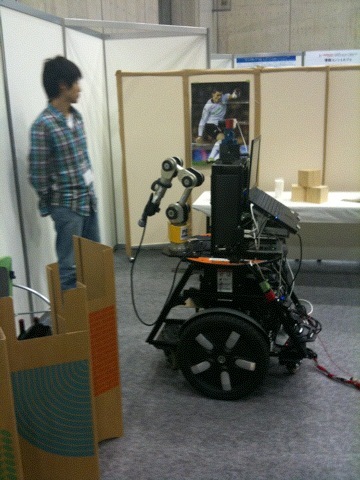A robot journalist

Move over citizen journalism, the next phase for media could be largely automated with minimal human intervention.
A robot developed by researchers at the Intelligent Systems Informatics Lab (ISI) at Tokyo University can execute primitive journalistic tasks by autonomously exploring its environment, detecting changes in its surroundings, determining what is relevant, and then taking pictures with its on board camera. It can even query nearby people and perform internet searches to further its understanding. As Singularity Hub reports, if something appears newsworthy, the robot will write a short article and publish it to the web.
"This is the first robot I’ve seen that gathers primary source information from people in the field. That’s real journalism, even if it’s at a primitive level. What’s more, if our experiences with crowd-navigated robots have shown us anything it’s that people seem to like helping bots in need. Robot journalists can go to areas too dangerous for human reporters," write's Singularity Hub's Aaron Saenz. He points to MIT's Afghan eXplorer robot as an example.
Automated news writing is not a new idea. Algorithms exist to generate original news video and write formulaic sports stories. According to The Next Web, "StatSheet and Stats Monkey both plan to automate sports reporting by taking stats from games along with historical data about teams and players to create a news story that reads like it was written by a journalist."
Taking it a step further, Aussie futurist Ross Dawson points to News At Seven, a system developed by Northwestern University that automatically generates a virtual news show. "Totally autonomous, it collects, parses, edits and organizes news stories and then passes the formatted content to artificial anchors for presentation. Using the resources present on the web, the system goes beyond the straight text of the news stories to also retrieve relevant images and blogs with commentary on the topics to be presented."
Journalistic automation will unlikely spell a newsroom full of robots someday, but there's no denying the benefits of leveraging increasingly connected sensors, networks, cameras, drones, and other devices to add dimensions to news stories that compliment those that remain the province of humans.
